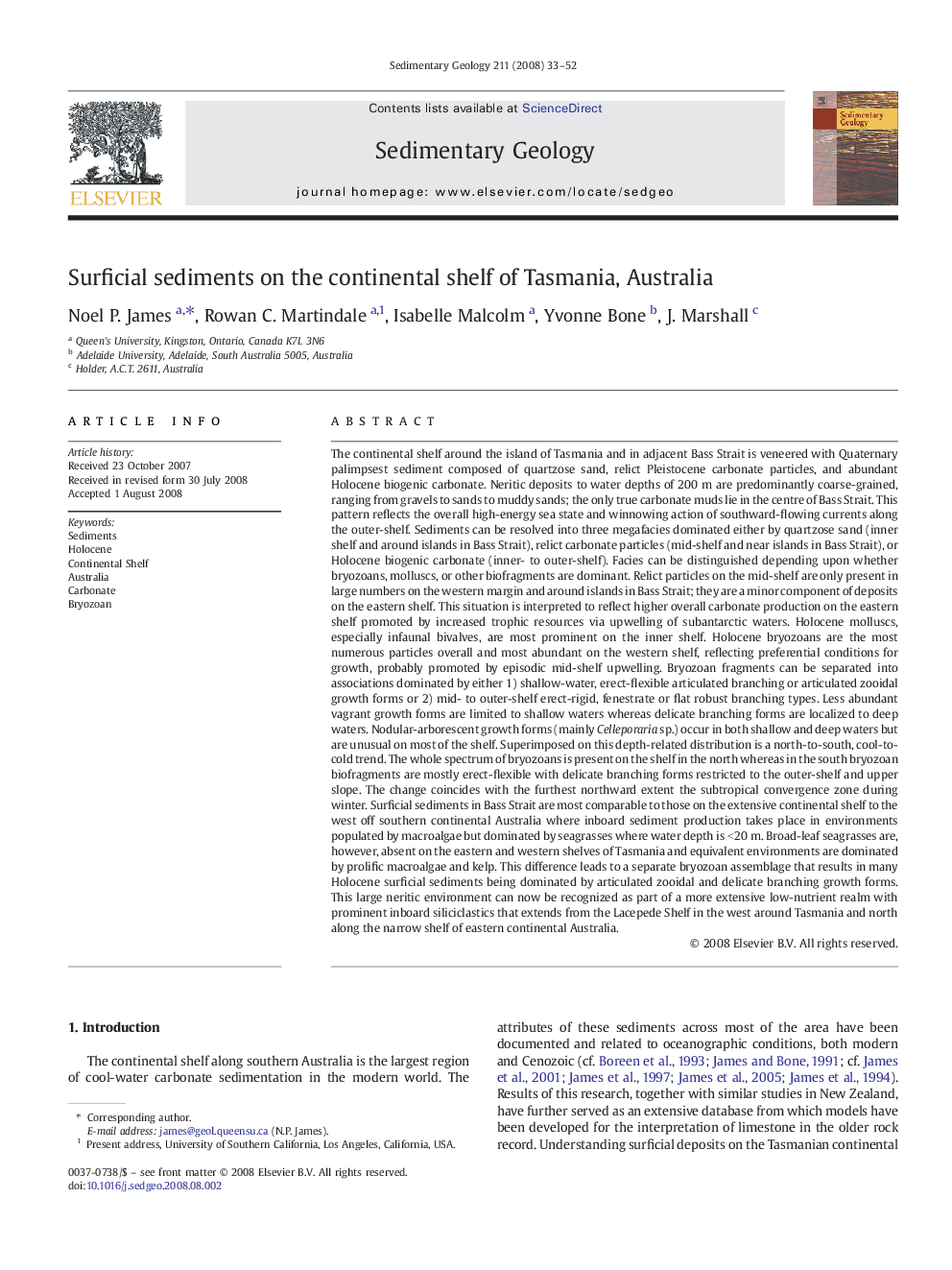| Article ID | Journal | Published Year | Pages | File Type |
|---|---|---|---|---|
| 4690536 | Sedimentary Geology | 2008 | 20 Pages |
Abstract
The continental shelf around the island of Tasmania and in adjacent Bass Strait is veneered with Quaternary palimpsest sediment composed of quartzose sand, relict Pleistocene carbonate particles, and abundant Holocene biogenic carbonate. Neritic deposits to water depths of 200Â m are predominantly coarse-grained, ranging from gravels to sands to muddy sands; the only true carbonate muds lie in the centre of Bass Strait. This pattern reflects the overall high-energy sea state and winnowing action of southward-flowing currents along the outer-shelf. Sediments can be resolved into three megafacies dominated either by quartzose sand (inner shelf and around islands in Bass Strait), relict carbonate particles (mid-shelf and near islands in Bass Strait), or Holocene biogenic carbonate (inner- to outer-shelf). Facies can be distinguished depending upon whether bryozoans, molluscs, or other biofragments are dominant. Relict particles on the mid-shelf are only present in large numbers on the western margin and around islands in Bass Strait; they are a minor component of deposits on the eastern shelf. This situation is interpreted to reflect higher overall carbonate production on the eastern shelf promoted by increased trophic resources via upwelling of subantarctic waters. Holocene molluscs, especially infaunal bivalves, are most prominent on the inner shelf. Holocene bryozoans are the most numerous particles overall and most abundant on the western shelf, reflecting preferential conditions for growth, probably promoted by episodic mid-shelf upwelling. Bryozoan fragments can be separated into associations dominated by either 1) shallow-water, erect-flexible articulated branching or articulated zooidal growth forms or 2) mid- to outer-shelf erect-rigid, fenestrate or flat robust branching types. Less abundant vagrant growth forms are limited to shallow waters whereas delicate branching forms are localized to deep waters. Nodular-arborescent growth forms (mainly Celleporaria sp.) occur in both shallow and deep waters but are unusual on most of the shelf. Superimposed on this depth-related distribution is a north-to-south, cool-to-cold trend. The whole spectrum of bryozoans is present on the shelf in the north whereas in the south bryozoan biofragments are mostly erect-flexible with delicate branching forms restricted to the outer-shelf and upper slope. The change coincides with the furthest northward extent the subtropical convergence zone during winter. Surficial sediments in Bass Strait are most comparable to those on the extensive continental shelf to the west off southern continental Australia where inboard sediment production takes place in environments populated by macroalgae but dominated by seagrasses where water depth is <Â 20Â m. Broad-leaf seagrasses are, however, absent on the eastern and western shelves of Tasmania and equivalent environments are dominated by prolific macroalgae and kelp. This difference leads to a separate bryozoan assemblage that results in many Holocene surficial sediments being dominated by articulated zooidal and delicate branching growth forms. This large neritic environment can now be recognized as part of a more extensive low-nutrient realm with prominent inboard siliciclastics that extends from the Lacepede Shelf in the west around Tasmania and north along the narrow shelf of eastern continental Australia.
Related Topics
Physical Sciences and Engineering
Earth and Planetary Sciences
Earth-Surface Processes
Authors
Noel P. James, Rowan C. Martindale, Isabelle Malcolm, Yvonne Bone, J. Marshall,
